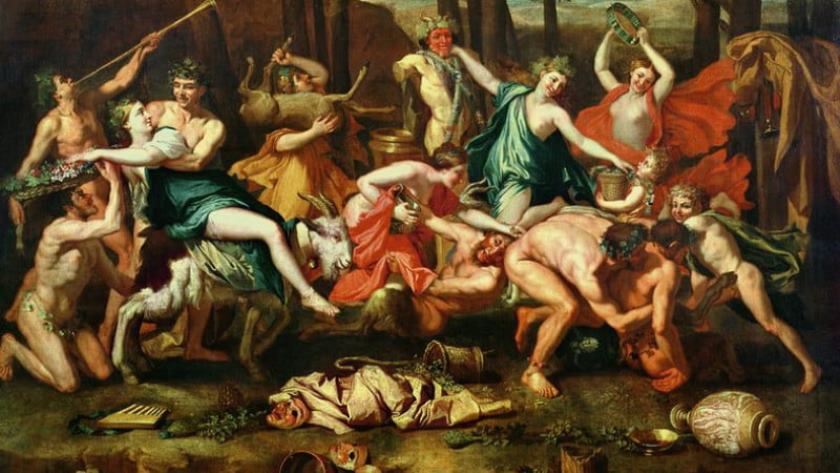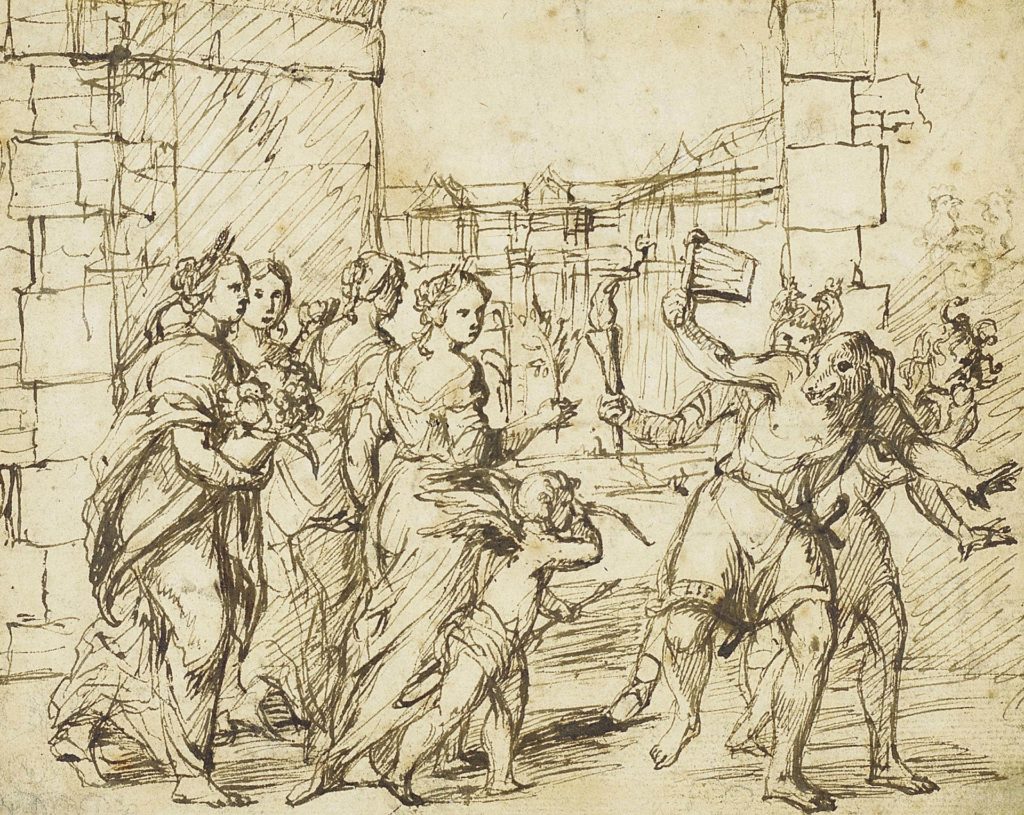Lupercalia was a festival observed annually on the 15th of February (the Roman month of purification) in the Roman Kingdom. It was conducted under the corporation of priests called Luperci (Brothers of the Wolf) to promote health and fertility.
The Lupercis were young men between the ages of 20 and 40. It is believed that the festival was connected with the wolf festival of Arcadian Lykaia and associated with the fertility god Faunus.
The exact origin of the Lupercalia is yet unknown. However, the name is suggested to be derived from the Roman fertility gods, Lupercus and Lupercal, the name given to the cave where the twins Romulus and Remus (the founders of Rome) were allegedly nurtured by the she-wolf Lupa.
Roman legend claims that in the 6th century BC, King Amulius ordered his twin nephews to be drowned in the River Tiber because their mother broke her vow of celibacy.
Instead, the twins were left in a basket in the river by a servant who took pity on them. The river god (Tiberius) carried the basket and the twins downriver to a wild fig tree, where the branches caught them.
The she-wolf (Lupa) discovered and raised them in her den at Palatine Hill, where Rome was founded. A shepherd and his wife later adopted the twins. After killing their uncle, who ordered their death, they found the cave of the she-wolf who suckled them and named it Lupercal.
The Rites of the Lupercalia

On the 15th of February of every year, the Lupercalia festival occurred at the Lupercal cave, the Palatine Hill, and public meeting places called the Comituim.
The feast was full of whippings and ritual sacrifices of dogs and male goats (a representation of sexuality) by the Luperci. The sacrificial animals were seen as odd, as sheep, pigs, or bulls were commonly used for sacrifice.
The Lupercis (a group of chief Roman priests) would dress as dogs and goats with cupids and personifications of fertility. They made offerings of salted meal cakes prepared by the vestal virgins.
The Luperci’s struck women who wished to conceive and made the sacrifices under the supervision of the Flamen Dialis- Jupiter’s chief priest.
After the blood sacrifice, two Lupercis will go to the altar and anoint their foreheads with blood from the sacrificial knife. Next, they cleansed the blood with a piece of wool dipped in milk, after which they were required to give a ritual laugh.
In the ancient Roman kingdom, the feasting began after sacrifice. First, the Lupercis would cut thongs and girdles from the stripped skin of the sacrificed animals.

After that, they would run through the city streets, striking those who came near them with thongs. They ran with the thongs and girdles, usually naked or scantily-clad
The reason for the nudity is unknown. Although some claim it is for speed while they ran through the city. But over time, nudity during the festival lost its popularity and became more chaste.
The event attracted a crowd of spectators as it is believed that women would purposely get in their way to be whipped on their hands, believing that the pregnant ones would be helped in delivery and the barren to pregnancy. However, the whipping was not sadistic; instead, it was more symbolic.
Children also found delight in this activity as they volunteered to be whipped. The festival concluded after the Lupercis completed their run in the Palatine and returned to the Lupercal cave.
The Lupercalia was violent, bloody, and sexually charged as there were random matchmaking and couplings in the hopes of warding off infertility.
The men would randomly pick a woman’s name from the jar to be with them for the festival period. Many couples chose to stay together until the following year’s celebration. However, many of them fell in love and got married.
Many scholars and history enthusiasts still argue about who or what the Lupercalia was celebrating. For example, some scholars believe it is to celebrate Inuus (the god of fertility); others say it’s for Faunus (the Roman pastoral god) or the wolf goddess Lupercal.
The Pope Who Criticized the Lupercalia
In 494 CE, the Christian church under Pope Gelasius I forbade participation in the odd festival, which had persisted for several generations, even among the Christian population. Pope Gelasius was the Bishop of Rome and also a prolific author.
In his letter to Senator Andromachus, he spoke about the controversy of the Lupercalia and provided details of the rituals. He proclaimed that the Lupercalia was a public crime and not one of salvation.
It is widely suggested that Pope Gelasius I mandated that the 14th of February would be used to mark the martyrdom of the feast of St.Valentine’s Day.
Lupercalia and Its Relationship With Valentine’s Day
Several legends surround the story of Saint Valentine. The most common being that on the 14th of February, in the 3rd Century AD, Valentine was executed by the Roman Emperor Claudius the Second.
This was after he was imprisoned for assisting persecuted Christians and secretly helping Christian couples in love get married. During his imprisonment, he tried to convince Claudius to convert to Christianity.
Enraged, the Emperor ordered him to reject his faith or die. True to his faith, Valentine refused to obey, and he was beheaded. Nevertheless, Saint Valentine became the patron of lovers, and to date, the 14th of February is celebrated as a day of love.
Many believe that Lupercalia’s rituals influenced and connected with Valentine’s Day, especially with the use of colors. However, this is unlikely, as the festival had nothing to do with love.
Also, Lupercalia featured bizarre sacrifices instead of chocolates and flowers known to be associated with love and Valentine’s Day.
The two events had little in common besides sharing a February calendar date. But, many believe they were connected because Valentine’s Day uses some Lupercalia color symbols, such as red, representing the blood sacrifice during Lupercalia, and white, symbolizing the milk used to cleanse the blood from the appointed Luperci to represent procreation.
However, despite what historians claim, Lupercalia has nothing to do with Valentine’s day. Finally, the Lupercalia Roman festival ended in the West about 1200 years after but continued in the East for another few centuries.

